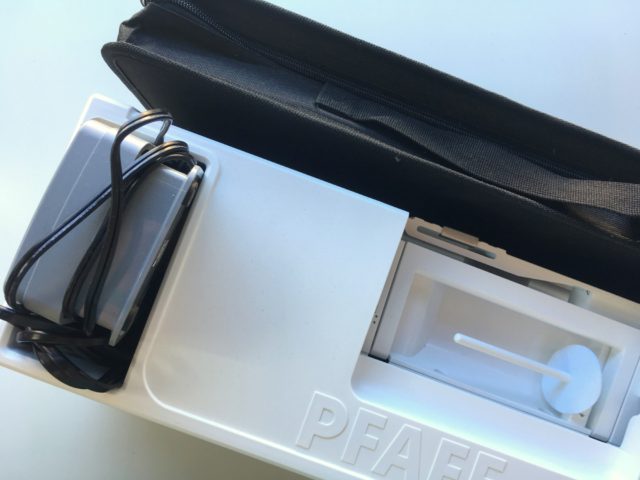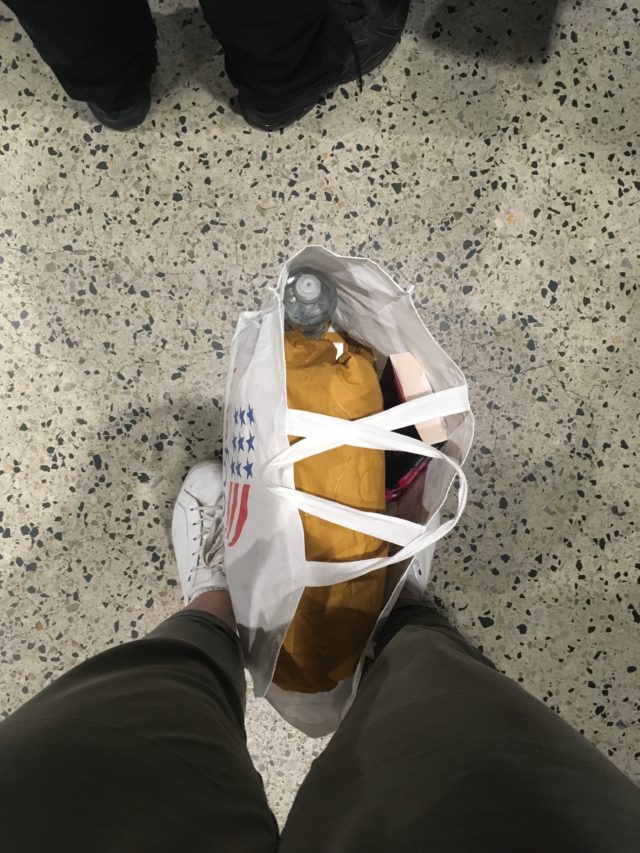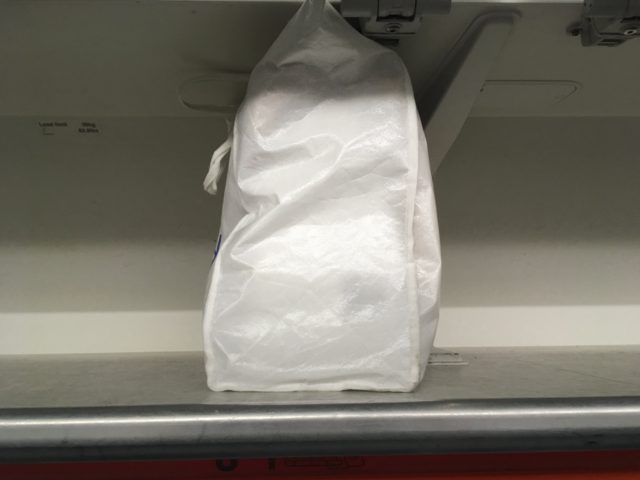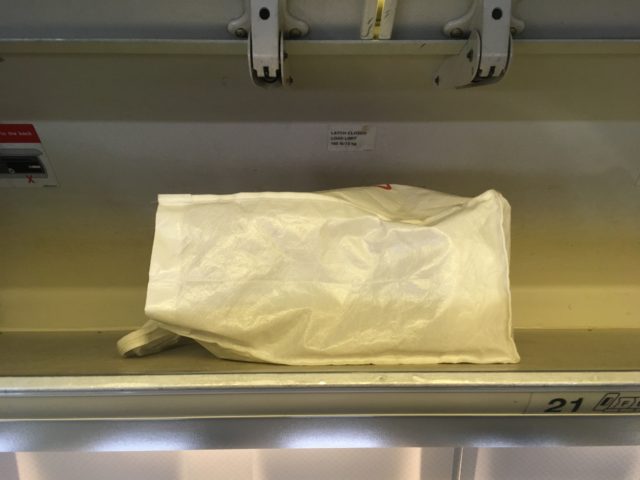Obligatory disclosure – this post is sharing my experiences on these specific routes on these specific planes on these specific days with these specific security people… it will give you a good guide of what to expect, but don’t take this as official advice!
A couple of months ago, I flew from Melbourne to Adelaide for a quilting retreat, which meant that it was my first time flying with my sewing machine as carry-on. I have previously flown international when moving to Japan and back again, each time with a sewing machine, and those times I simply packed them back into their original boxes with the original packaging, and all was well. Flying domestically, however, is a different ballgame! I flew over on Jetstar, and returned on Qantas.
Carry-on allowance in Australia is 7kg or 10kg (depending on the airline) but as the Pfaff Passport 3.0 is only 6.7kg, even Jetstar’s base allowance of 7kg was enough. Note – I did pay to get 10kg though, so that I could have other carry-on too, like my handbag. To prepare for departure, I removed the needle (time for a change anyway!), and the removable accessories tray, pedal, power cord, and the extension table were packed in my suitcase.
The Pfaff Passport comes with a hard travel case which slides on top of the machine, and includes a space to store the pedal and power cord and slots for the extension table bag to clip on to the side. Which is fabulous for driving it around town to and from sewing events and gatherings and retreats around the place, but I knew it would be not so fabulous when navigating overhead luggage compartments. For starters, the machine handle is accessible through the top of the hard case, and this would not be within reach when trying to get it back down, nevermind trying to wrangle it all up there in the first place.
One option would be to purchase a trolley bag, but as I don’t need it for normal, local travel use, I didn’t want to spend so much money on one. I have also seen some people pack their sewing machines in a carry-on-sized suitcase, but the one we have is designed more for business travel (extra pockets and such for a laptop, etc) so my machine wouldn’t have fit. Instead, I wrapped it in a small quilt and used a large, strong tote bag – padded, protected, easy to take out for security, and a bonus Show And Tell item for retreat. It worked a charm! I even had space for my drink bottle and book.
I’ll admit, I was nervous about going through security, but needlessly so. I simply told the security officer what it was and that I had removed the needle, laid it flat in a tray for scanning purposes, and each time I went through, it made for amused comments from the people behind me in the line. Yes, it certainly “isn’t something you see everyday!”, but it passed with flying colours, and looked pretty damn cool on the X-ray screen too!
When it came time to board, I made sure to line up early to guarantee space in the overhead luggage compartment directly above my seat. On the Jetstar flight, I was able to place it upright in the compartment.
I returned on a Qantas flight, and due to the plane’s dimensions, this time I had to lay it flat on its back. Another reason why the hard travel case wouldn’t have worked for flying.
And I’m happy to report that it survived both flights with no problems – the machine turned on and stitched away happily each time.
If the day comes when I am flying more often with my sewing machine, I would certainly invest in a trolley bag. The Pfaff Passport 3.0 weighing in at 6.7kg is definitely small and light for a sewing machine, but carrying 7kg+ total of carry on by hand does get heavy! But in the meantime, it’s nice to know that this method of transport is possible and easy.
Have you ever had to fly with a sewing machine? How did it go? Let us know in the comments!




Susan says
That was a great solution for this small machine. I have traveled with my Featherweight before, strapping a belt around the regular box to be sure it didn’t come to any harm, and it fit under the seat, so was no problem for carry on. We don’t have that kind of weight limit, or not the last time I flew, anyway, but it would easily have fit under the 7 kg. weight, I think, and definitely the ten. I think it’s always a worry for us to take it up, but putting it in cargo would scare me a lot!
Alyce says
Ooh yes, it’s scary checking them in! Even when I had the original box and foam packaging!
Lana says
Thank you, my grandma is giving me her sewing machine that she can no longer use, and I was concerned about how to travel across Australia with it. This helps alot.
Mick says
I have never used a sewing machine, but I offered to transport one from Darwin to Sydney on a QANTAS flight. I had packaged up the box and thought.. I’d better just check it was ok so I googled and found your blog.
So I reopened the box and it turned out my friend’s machine is also a PFAFF and indeed the needle was still in the needle holder and the accessory tray had stacks of hidden goodies that would have excited the security officials. So i removed them and put them in my checked in luggage. The box then weighed just under 9kg.
When I put it through the xray at security they asked me if there was anything sharp and I simply said that I had taken the needles out (which I had). I guess I could have opened it up for them, but they were happy enough with that reply.
It was easy enough to put in the overhead locker.
Thanks again!
Margaret says
Thank you for this information. I have just purchased a Passport 3.00 specifically for travel. Have been researching trollies etc . I love your method.
With thanks